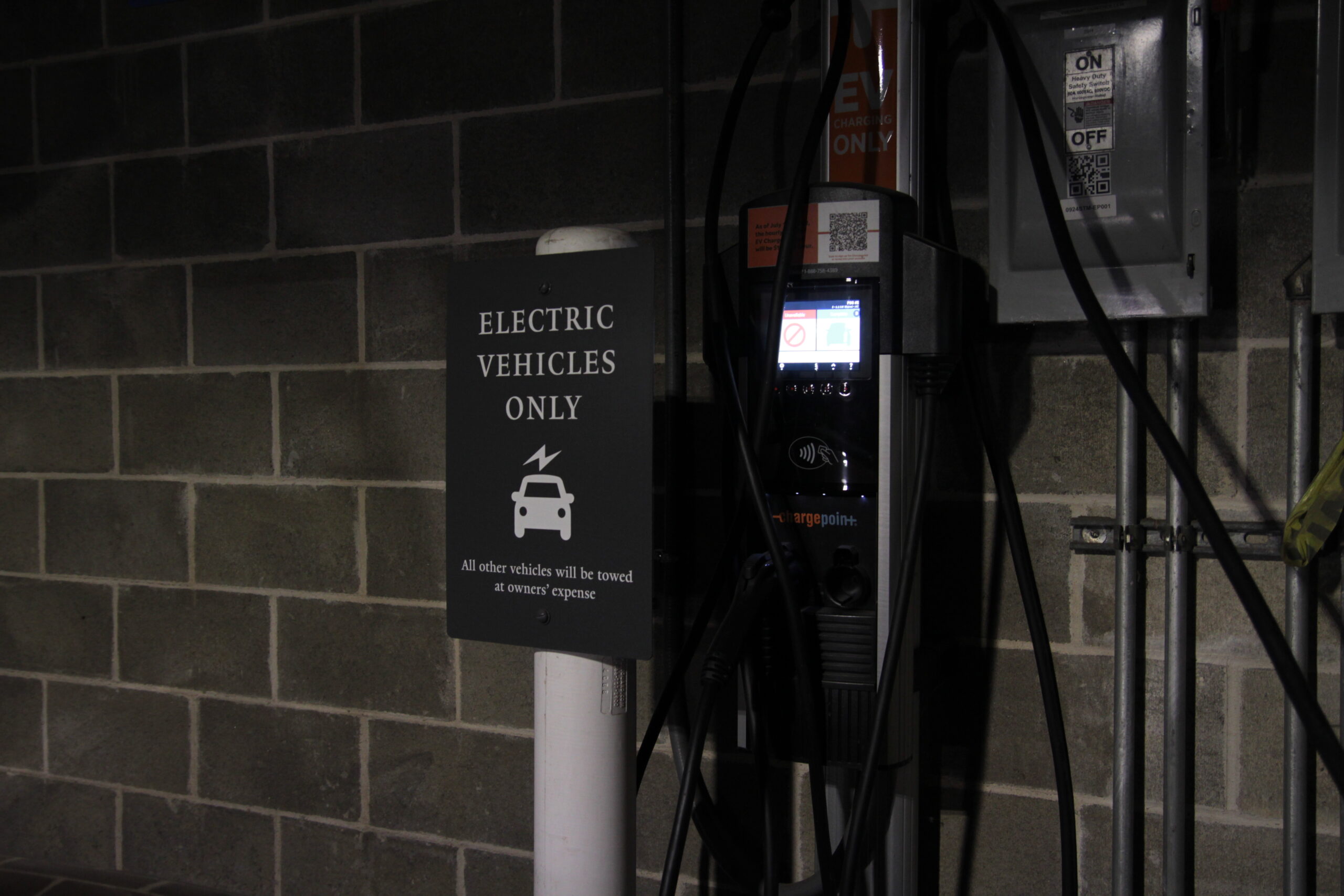U.S. electric vehicle subsidies expire, raising fears of global lag
Without federal incentives, experts warn of slower electric vehicle adoption and higher emissions.

Alex Hong, Contributing Photography
Federal tax credits for electric vehicles expired on Sept. 30, ending a $7,500 subsidy that had made cleaner cars more accessible to American buyers for more than a decade.
Introduced in 2008, the tax credits were meant to bridge the cost difference between gasoline and electric powered vehicles. The policy was extended under the Inflation Reduction Act until 2032, until the Trump administration’s “One Big Beautiful Bill” terminated it seven years early.
The termination arrives at a critical moment for the global automotive industry. China has surged ahead in battery production and electric vehicle, or EV, sales, while the European Union nations have established strict emission standards. Without similar federal commitments, the United States may lose ground in an industry expected to dominate transportation and energy markets.
In the final months of the subsidy, dealerships reported record sales as Americans rushed to secure credits before they disappeared. July and August marked the strongest months in U.S. history for EV sales, underscoring how tightly adoption has been linked to financial incentives. With the program ended, growth is expected to slow, raising concerns about both climate goals and industrial competitiveness.
“The loss of the tax credits for electric vehicles is likely to slow down the uptake of electric vehicles across the United States, and it is disappointing for those who want the U.S. to continue to move toward a clean energy future,” Daniel Esty LAW ’86, a professor of environmental law and policy at Yale Law School, said.
Esty, who previously served as commissioner of Connecticut’s Department of Energy and Environmental Protection, emphasized that states will now carry greater responsibility. States such as California, New York and Connecticut have already announced independent EV incentive programs, while others have adopted zero-emissions vehicle mandates. But Esty warned that without federal coordination, state-by-state efforts risk producing uneven results.
He said European governments are pursuing coordinated approaches that combine subsidies with renewable energy mandates. In Asia, China has paired consumer rebates with industrial policy, giving domestic automakers a dominant share of the global EV market. These strategies contrast sharply with U.S. retrenchment at the federal level.
American automakers, meanwhile, face increasing uncertainty. Shifting regulations and tariffs under the Trump administration have left other manufacturing policies open to reversals. Without confidence in expected demand, manufacturers may cut back on innovation or shift investment overseas.
“It’s very clear that U.S. automakers are disappointed by the administration’s policies broadly. They’re disappointed by the loss of the tax credits for electric vehicles. They’re unhappy with the tariffs that have been put in place,” Esty said.
EV incentives have had measurable effects on consumer behavior. Electric vehicles still carry higher upfront costs than gasoline-powered cars, and credits helped close that affordability gap for households.
Sales data from Autovista Group confirms the link. In the months before expiration, EVs accounted for more than 12 percent of new car purchases, a record high for the U.S. market. Much of that surge is attributed to consumers seeking to benefit from the subsidy before it disappeared.
“There’s evidence that a meaningful share, from 10 percent to 30 percent, of the EVs that were being sold were purchased because of the incentives,” Stephanie Weber, an assistant professor of economics at the University of Colorado Boulder, said.
Weber explained that automakers are already adjusting. Honda canceled a planned electric SUV this summer, citing reduced expectations for U.S. demand. General Motors and Volkswagen have similarly scaled back production schedules. Esty said that these decisions suggest that American companies are bracing for a weaker market than international competitors, who continue to expand under stronger government support.
Policy differences extend beyond subsidies. California has retained its right to impose stricter vehicle emissions standards, a move joined by 11 other states. But the elimination of federal penalties for failing to meet national efficiency standards has diluted the pressure on automakers at the national level.
Industry observers note that the absence of a unified policy creates uncertainty, which can chill investment. While international rivals benefit from stability, U.S. firms face a stop-and-start approach that complicates planning.
“We are going to see fewer new products than we might have otherwise,” Weber said. “Some automakers have actually canceled EV models that they had previously announced. For example, Honda canceled plans for a large electric SUV in July, anticipating a decrease in U.S. demand.”
Kenneth Gillingham, a Yale professor of environmental and energy economics, emphasized that the impact of EV subsidies cannot be understood in isolation. His research shows that in coal-heavy regions, EV adoption can actually prolong fossil fuel reliance unless accompanied by electricity-sector reforms. Consequently, subsidies alone are not enough to maximize climate benefits.
“This means a few things. One is that we should plan on carbon pricing at the social cost of carbon if that is at all possible politically. It also means that if we want EV adoption to reduce emissions as much as possible, we also need policies reducing emissions from the electricity sector,” Gillingham said.
He added that the repeal of subsidies may deepen divides in access to cleaner transportation. States that maintain their own programs or have cleaner grids are positioned to benefit first, leaving households in coal-heavy regions with fewer options and higher emissions. The result is that clean air and cost savings may increasingly be concentrated among wealthier communities.
Looking ahead, Gillingham stressed that policy uncertainty has broader implications beyond emissions. Automakers, utilities and investors rely on predictable signals when deciding where to put resources. Without them, the U.S. risks losing momentum in both innovation and industrial leadership at a time when international competitors are moving decisively.
Gillingham noted that consumer interest in EVs will persist. Battery prices are continuing to fall, operating costs remain lower than gasoline vehicles, and states are introducing new subsidy programs. Still, without federal backing, the pace of adoption is likely to flatten, leaving the United States less prepared for a transportation sector that is rapidly electrifying worldwide.
“It is always the case in energy and environmental policy that incentives matter,” Esty said. “And when an important incentive, like the tax credits that were in place, disappears, it slows down the progress for getting people to consider electric vehicles.”
Global electric car sales surpassed 14 million in 2023, accounting for nearly one in five new cars sold worldwide.







